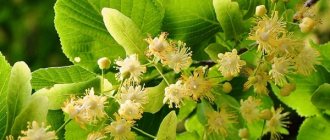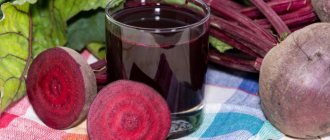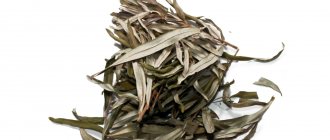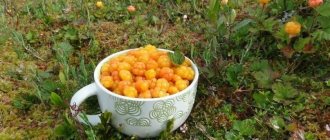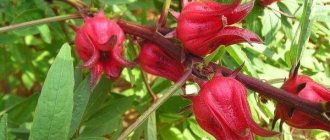Rosehip or “wild rose” is a perennial shrub that blooms with fragrant pink flowers in early spring and delights the eye with bright red fruits in late summer. The plant has long been used in many fields, in particular medicine and cooking. Fragrant jam and syrups are made from beautiful rosehip petals, and the fruits are widely used in folk and official medicine.
Industrial fee
There are up to 10,000 varieties of rose hips
Blooming rosehip
In what form is it sold in the store?
Like raspberry jam, rosehip tea was first used in the treatment of colds and flu by Soviet mothers in case of illness of loved ones. But the range of medicinal properties of this red berry is not limited to just the immunostimulating effect. The healing effect of the plant is enormous, because it contains many vitamins, acids and essential oils necessary for health. Find out how to properly prepare rosehip tea, what benefits and harms can come from regular use!
Beneficial features
An infusion of rose hips, roots and flowers is known to many due to its strengthening, immunostimulating and anti-inflammatory effect. The drink will be an excellent means of prevention during the season of flu epidemics and cold weather, as it stimulates the strengthening of the body's protective functions. The product is widely used in the treatment of other diseases due to its healing properties.
Benefits of rosehip tea:
- Strengthens nails and hair, increases their growth rate.
- Reduces cholesterol levels in the body.
- Helps cleanse the blood.
- Has a mild choleretic effect.
- Normalizes blood pressure.
- Strengthens the walls of blood vessels.
- Has a diuretic effect.
- Reduces blood sugar levels.
- Indispensable for hypovitaminosis, including scurvy.
- Stabilizes metabolism.
- Has a pronounced wound healing effect.
- Relieves fatigue.
- Normalizes stool in gastrointestinal diseases.
- Activates tissue regeneration.
- Stimulates the body's recovery processes thanks to its antioxidant effect.
- Removes toxins.
- Increases blood clotting.
A properly prepared drink has this effect. The beneficial properties of rosehip tea last for seven hours, after which the effectiveness decreases.
How to brew tea?
How to brew tea correctly? How many petals should I use to make tea? These are quite important questions, because if you brew tea incorrectly, you can lose all the beneficial properties of rosehip petals. There are many recipes and uses for tea with benefits for the body. Details of tea brewing and types of use are described below.
| Name | Brewing method |
| Classic tea | Tea made from rosehip petals is inferior in its usefulness to infusion of the fruit, but is still a fairly useful vitamin drink. Making this tea is very simple. You need to pour a glass of boiling water over a handful of petals and leave to steep. There are recipes for cooking with the addition of honey, lemon or petals of other flowers. Drinking this tea will fill the body with strength and vitamins. |
| For weight loss | Slimming tea made from rosehip petals is very popular. The effectiveness of losing weight when taking this drink is due to the fact that both fresh and dried wild rose petals help the stomach function, improve metabolism and have a diuretic property. To prepare tea, you need to pour half a glass of petals with a liter of boiling water and let it brew. This tea should be drunk throughout the day. Long-term consumption of tea will not only help you lose weight, but will also fill your body with vitamins and add energy, which can be spent to benefit your figure by playing sports. |
Rosehip petals are used as an additive to regular teas; they fill them with a special aroma and vitamins. Teas prepared using the petals are brewed almost identically and are endowed with equal healing properties. But tea made from fruits is considered more healthy and rich in vitamins.
As a result of studying all the information, we can conclude that rosehip petals are useful almost as much as its fruits, and are fully used in many sectors of human life.
Contraindications and possible harm
Despite the wide range of uses of rose hips in medicine, a drink from this berry may be contraindicated in the following cases:
- history of pancreatitis;
- increased stomach acidity;
- endocarditis;
- thrombophlebitis;
- individual intolerance.
If taken uncontrolled, the drink can cause harm to the body.
Regularly exceeding the recommended daily dose of ten berries can negatively affect your health and lead to:
- allergic reactions;
- constipation;
- obstructive jaundice;
- slowing down bile secretion;
- thinning of tooth enamel.
Before taking rosehip decoction or tea, people with liver disease and a tendency to allergic reactions should consult a doctor.
Pregnant and lactating
You can drink the drink during pregnancy. This is an excellent natural immunostimulant that has a pronounced anti-cold effect. Regular use will help the expectant mother avoid taking medications for ARVI and influenza, which are undesirable during the period of bearing a child. Teas with rose hips will also help cope with toxicosis, increase hemoglobin and prevent the development of anemia. Decoctions reduce the risk of developing acute respiratory infections and strengthen the body before childbirth.
When breastfeeding, rosehip tea is useful and desirable in the diet. It restores the tone of the female body after the birth process and enhances lactation.
How to brew and drink rosehip correctly
You can prepare medicine from both dried and fresh fruits of the bush. But in any case, some rules and features should be taken into account in the process.
- The berries do not need to be boiled - they need to be poured with boiling water.
- You can artificially lengthen the cooking process by steaming, for example, in a thermos or under a lid.
- Each time it is advisable to brew a new portion of rose hips.
- If you want to sweeten the drink, add a little sugar or honey to it, but do this after brewing.
- You can add other herbal ingredients to rosehip tea.
- You can drink the drink both hot and cold. You can even add water to it. Don’t worry, this will not affect the healing properties in any way.
- Try to prepare as much tea as you plan to drink. But it is not recommended to leave the product for later.
- If a film appears on the surface of the drink, do not remove it - it contains essential oils and resins that are valuable for the body.
For children
You can give rosehip decoction to children from six months or when they start complementary feeding. The first portion is no more than one teaspoon. If the reaction to the decoction is positive, you can increase the dose to half a glass. To strengthen the immune system, give infants a decoction in the following concentration: 1 tsp. tea per glass of warm water. Children older than one year are allowed to introduce an infusion of berries into their diet, and from three years of age, rose hip syrup can be given, starting with one spoon per day. Teenagers are allowed to use the product in any form.
For diseases, research
Interest in the therapeutic effects of rose hips on the body is growing. Recent studies carried out in July 2021 at the University of Navarra showed the effect of the plant on the course of certain diseases. Some of the results amazed scientists, because no one expected such effectiveness from an ordinary wild rose. A group of antioxidants has been identified in rose hips that can neutralize free radicals in the human body, which can provoke tumorigenesis, and also deactivate ATP (adenosine triphosphoric acid).
Diabetes
Several studies have shown that overproduction of ROS plays a key role in the severity of diabetes complications. In addition, ROS also enhance the formation of nitric oxide by favoring peroxynitrite, a strong oxidant that damages DNA. Rose hips have antidiabetic properties. Tea made from these berries can lower blood sugar levels, and the antioxidants in the composition neutralize ROS. Rosa canina has also been shown to enhance β-pancreatic cell proliferation and increase the number of pancreatic islets. Other benefits of rose hip extracts come from its ability to inhibit α-amylases and α-glucosidades, which reduce blood glucose levels in a manner similar to the α-glucosidase inhibitors currently used to treat type II diabetes.
Gastritis
Due to its high content of antioxidant molecules, rosehip extract has demonstrated a protective effect against other pathologies associated with redox imbalances, such as gastritis. In the atrophic form of the disease, with a decrease in the function of hydrochloric acid secretion and digestion, preparations based on wild rose are able to produce gastric juice and alleviate the symptoms of the disease.
Stops the development of atherosclerosis
Rose hips contain ascorbic acid. Scientist J. Harrison and co-authors discovered the positive effect of this vitamin on cognitive decline and Alzheimer's disease.
Prevention of cancer
As a result of research, ellagic acid in rose hips has shown antimutagenic and anticarcinogenic effects. This compound can act as an antioxidant and induce apoptosis in carcinogenic cells, providing successful prevention of cancer. Carotenoids in fruits are very important in the human diet because they act as provitamin A and can prevent disease. The role of rosehip in cancer treatment has been tested among a wide range of metastatic tumors, with promising results obtained in most cases.
Gout
The essential oils in the composition are able to dissolve and remove uric acid salts from the body. Taking medications with fruit extract can relieve the inflammatory process and normalize metabolism, reduce pain and alleviate the general condition. It is recommended to take rosehip tea along with dried apricots. This combination can be used for a long time.
Osteoporosis
Recent research by scientists in Spain has shown that antioxidant supplements are effective in restoring bone mineral density (BMD) by regulating oxidative stress levels. As a source of antioxidants, rose hips are one of the best options. The berry extract has a similar phytochemical profile to blueberries, characterized by high levels of antioxidants, hence they may also play an important role in the prevention of osteoporosis. For example, ascorbic acid (AA) is a cofactor required for the hydroxylation and secretion of procollagen, as well as the formation of stable triple helical collagen, a molecule essential for the proper growth and maturation of both connective and bone tissue.
Several studies have shown that natural antioxidants, including polyphenols in rose hips, reduce bone loss caused by oxidative stress. Due to its high antioxidant content, wild rose represents one of the potential treatments for osteoporosis. This is due to accelerated regeneration of affected tissues and increased bone formation due to the synthesis of the collagen matrix and stimulation of osteoblasts.
Thins or thickens the blood
Rose hips help thin the blood. This effect prevents blockage of blood vessels and helps get rid of plaques that lead to the formation of blood clots. The fruits also help strengthen the walls of blood vessels and normalize blood circulation.
Recommendations from nutritionists for losing weight
Experienced nutritionists say that rosehip decoction is an effective additional remedy for weight loss. The drink contains many microelements that speed up metabolism. For a pronounced effect, it is important to regularly consume rose hips, at least three times a day before meals. To lose weight, you should take tea brewed in a thermos at a temperature no higher than 70 degrees.
However, this is only an additional method. Proper nutrition and exercise will help you lose weight faster.
The drink is capable of:
- normalize metabolic processes;
- remove toxins and excess fluid from the body;
- get rid of toxins;
- improve the functioning of the gastrointestinal tract.
Rosehip infusion will help remove swelling and make cellulite less pronounced. To enhance the effect, you can add natural fat burners to the tea: ginger, lemon, cinnamon.
How to brew the right rosehip tea
Infusion in a thermos
This method completely eliminates boiling; therefore, beneficial substances are not destroyed. The drink turns out to be as rich in vitamins as possible. The daily dose for a child is one tablespoon of fruit. For an adult - two spoons. Based on this, calculating the amount of berries in the drink, because excess vitamins can cause harm to the body. Before starting cooking, be sure to pour boiling water over the berries to remove dust and pathogenic bacteria.
- We prepare a thermos, preferably not a very large one, treat it with boiling water;
- boil half a liter of water per person;
- pour boiling water over the berries;
- Place the thermos in a warm place overnight, additionally wrapping it in a towel;
- In the morning we filter the drink.
We advise you to read: Decoctions for ulcers
The decoction should be consumed 3-4 times a day, warm or cold. The drink is brewed for at least 7 hours, preferably longer. You can add honey or sugar to the prepared tea, but only in the morning after preparation.
Brewing in a saucepan
What if you don’t have a thermos at hand? Is it possible to drink rosehip tea brewed in a regular saucepan? Yes, but you need to follow the cooking rules. In this case, aluminum pans are completely prohibited: the metal has increased activity, enters into a chemical reaction with ascorbic acid and harmful oxidation of the decoction begins.
Can be brewed in steel, enamel or copper containers in the following way:
- boil 1 liter of purified water;
- remove from heat and add 150 grams of dried rose hips;
- tightly close the pan with a lid, wrap it in a towel for 30-40 minutes;
- after half an hour, chop the soft berries and cover the pan again for another 4-5 hours;
- strain the drink and pour it into a glass container.
The decoction prepared in this way can be stored in the refrigerator for no more than 4 days. The result is a fairly concentrated drink, in this form it is drunk half a glass a day, or it can be diluted with water, in which case a third of the amount of prepared tea is added to the liquid.
In the same way, you can prepare a decoction of fresh rose hips in a saucepan.
Brewing in a multicooker
You can’t argue that a multicooker makes a housewife’s work in the kitchen much easier. With its help, you can prepare tea with rose hips without any effort, but the benefits of the drink will remain the same.
- Pour boiling water over 250 grams of dried berries. With this method, fresh and frozen berries should not be used;
- pour them into the bottom of the bowl;
- pour 2 liters of prepared water, if desired, you can add honey or granulated sugar;
- you can add a slice of lemon to increase the concentration of vitamin C if you are preparing the drink to prevent colds;
- Turn on the stewing mode and leave to cook for 2 hours;
- Let the drink cool without opening the multicooker lid.
The product prepared in this way must be drunk within 24 hours; it is prohibited to store it.
What valuable substances does it contain?
All parts of the plant are used in the manufacture of medicines. Rosehip petals or berries are usually added to tea.
The fruits contain:
- pectins;
- organic acids;
- essential oils;
- micro- and macroelements: sodium, potassium, magnesium, phosphorus, manganese, chromium;
- tannins;
- vitamins group B, A, PP, K, E, C;
- antioxidants.
The highest concentration of medicinal elements is contained in the fruits. It is lower in the roots and leaves of the plant. However, both berries and roots are considered champions in terms of the amount of vitamin C. Rose hips are low in calories, despite their sweet taste. It is only 162 kcal/100 grams of dry raw materials.
Features of harvesting fruits for the winter
Harvesting of berries can be carried out at the moment when the shell of the fruit acquires a characteristic brown color and still remains slightly hard. Damaged, soft and frozen fruits are unsuitable for storage. Collected high-quality raw materials are dried immediately after collection at a temperature of no more than 40 degrees. If the berries, after drying, retain their natural aroma and color, do not stick together or lose their shape, they are prepared correctly. Dried fruits are stored for no more than two years.
Freezing is ideal for preserving beneficial properties throughout the year. Before the procedure, wash the berries thoroughly and dry completely.
Brewing water temperature
It is necessary to brew rose hips in a thermos or in a kettle with hot water, but not boiling water. The optimal temperature is 60 - 70 degrees. A higher level will destroy most of the beneficial microelements contained in the fruits.
How to brew tea in a thermos:
- rinse the berries, remove lint;
- Pour 100 g of berries into a liter of hot water;
- Close the thermos and leave for 1 hour to infuse.
Drink the drink undiluted.
Brewing rose hips in a teapot is done as follows: rinse the berries and add hot water at the rate of 200 ml per 2 tbsp. chopped berries. Infuse the tea for at least ten minutes. Strain the drink before serving.
How to brew rose hips with weak immunity
Tea with roots
As mentioned above, all parts of rose hips are useful. A drink made from the roots is especially beneficial for joints. Take part of the roots, three parts of leaves, and brew with hot water. The tea should sit for two hours until it is completely ready. Drink for problems with the stomach and intestines, brew it to reduce pain in joint diseases.
From flowers
Rosehip flower tea has an exquisite taste, amazing aroma and great benefits. The drink is rich in microelements necessary for every person, and perfectly restores after a hard day at work or a serious illness. To prepare, a spoonful of dried or fresh flowers is steamed with hot water and filtered after forty minutes. Drink a couple of glasses a day for two weeks. Then a break, treatment is repeated after two weeks.
Vitamin drink
Tea with rose hips and currants is an excellent vitamin supplement. The drink has an excellent taste, amazing aroma, and great benefits. Take equal parts, separate 4 spoons and steam with half a liter of boiling water, leave for an hour. Drink a third of a glass three times a day.
Rowan and rosehip tea
You will need a tablespoon of berry mixture and 0.5 liters of water. Cook over low heat after the start of boiling for ten minutes, leave for three to four hours. Take 1/2 cup three times a day.
Rosehip tea recipes
Rosehip tea can be varied with additional ingredients. Here are some interesting recipes for a rosehip drink with medicinal herbs, spices, berries and fruits.
With mint
For preparation you will need the following ingredients:
- chopped rose hips - 3 tsp;
- black tea - 2 tsp;
- hawthorn berries - 3 tsp;
- mint - 1 tsp;
- boiling water - 1 l.
Preparation:
- Pour the mixture of herbs and berries with hot water.
- Let it sit for thirty minutes.
- Add a spoonful of honey to the cooled tea to taste.
- This recipe is recommended for atrial fibrillation, vitamin deficiency, tachycardia, and iron deficiency.
With cardamom
The process of preparing the drink is no different from the classic brewing of rosehip tea. You just need to add a few cardamom grains to the berries. It is best to brew in a thermos. The finished drink can be sweetened with stevia or honey. The infusion is recommended for hypertension and problems with the pancreas.
With apples, pears, oranges
Fruit vitamin tea with apple, pear or citrus slices will be the best way to prevent colds. To prepare the drink, you need to prepare fruits and berries, wash them and chop them into pieces. Mix the ingredients with two teaspoons of green tea and pour in a liter of boiling water. Infuse the tea for half an hour, then add lemon or honey to taste.
Green tea with rose hips
It is necessary to rinse the rose hips and add hot water. Leave the drink in the thermos for an hour. Before drinking, you should brew green tea at the rate of 1 tbsp. raw materials per 500 ml of water. Mix 1/3 cup of rosehip with hot green tea and let steep for a few minutes. Add sugar or honey to taste.
With berries
- raspberries;
- viburnum;
- black currant;
- cranberry;
- blueberry.
It is recommended to use berries frozen or fresh. Good quality dried fruits will also work. To prepare a tea drink, you need to chop the berries (one dessert spoon at a time) and pour 400 ml of hot water into the raw material. Infuse tea in a thermos for an hour. Drink with honey.
With medicinal herbs
When brewed for a long time in a thermos, additional components in the form of medicinal herbs can be added to the rose hips. The brewing procedure is classic.
Combinations of rose hips with:
- chamomile;
- thyme;
- hibiscus;
- linden blossom;
- currant or raspberry leaves;
- sage;
- lavender.
Use of rose hips petals
The uses of rosehip petals are quite varied. Infusions, decoctions, teas, syrups, liqueurs, oils, and various cosmetics are made from them. The details of using the petals are described below.
In cooking
In cooking, dried rosehip petals are used to make rose syrup and vinegar, which are later used as additives for the preparation of various toppings and ketchup. There are many different recipes using rose petals. Here are some of them:
| Name | Cooking method |
| Classic jam | There are really many recipes for making jam from rose hips. In the simplest and most classic versions, collected and washed rose petals are mixed with approximately equal amounts of sugar in one deep container or these ingredients are alternated in layers. Then the workpiece is left to infuse for about 12 hours in the dark and cool. Next, the most standard syrup for all jams is prepared: one and a half kilograms of sugar are mixed with half a liter of water and boiled, the resulting liquid is poured into the infused petals. Well-cooked rosehip petals are rolled into jars for the winter along with syrup. No less often, you can also find recipes where various citrus fruits are added to the jam, for example, lemon or orange; in this case, mint would not be out of place. |
| Syrup | You can make an unusually healthy and equally tasty syrup from rosehip petals. Its preparation is quite simple: you need to boil a liter of water, add 700 grams of sugar and a handful of petals, and boil for a few minutes. Afterwards, you need to let the syrup brew for a day, then strain and boil again. For long-term storage, hot syrup is poured into glass containers and covered with lids. This syrup will come in handy if you need to prepare original cocktails and sweets. |
| Wine | Homemade wine from rose hip petals has a unique taste, aroma and a whole range of useful qualities. To prepare the drink, you need to place 300 grams of petals in a large container, add two kilograms of sugar and a few teaspoons of citric acid or lemon juice and grind into a mushy mass. Pour the petals into a large container, pour in regular syrup and cover with gauze. The wine needs to brew in a warm place for 14 days. Then, after straining the wine from the petals and adding half a kilogram of sugar, they leave the wine to infuse for thirty days in the sun. Some winemakers use various additives in preparation; it depends on the gastronomic preferences of each person. |
Rose hips are more widely used in cooking, from which jelly, puree, jelly and other various delicacies are prepared, but the petals are also no less popular in cooking.
In folk medicine
In folk medicine, the use of rose hip petals is very diverse. They are used to prepare various decoctions, infusions, oils, honey and are used fresh. People suffering from anemia, cardiovascular diseases, vitamin deficiency, and bronchitis need to chew fresh petals. Oil prepared from the petals is smeared on teeth and gums to heal and strengthen them. The use of petals in folk medicine is quite varied and interesting. Preparing infusions, decoctions, oils, honey does not take much time and is a fairly simple process. Preparation details are described below.
| Tincture | A tincture prepared from rose petals has a fairly diverse effect: it helps improve metabolism, prevent colds and strengthen the immune system, heal wounds, and maintain the normal functioning of the gastrointestinal tract. It is quite simple to prepare: you need to mix a glass of dried petals with one liter of vodka or alcohol, mix and leave to infuse in a cool and dark place for thirty days. |
| Decoction | In case of vitamin deficiencies and very frequent colds, it is recommended to prepare a very simple decoction from the petals. To create it at home, you need to pour a handful of fresh or dried petals with 1 liter of boiling water, and then leave them to steep overnight. The strained liquid should be consumed before each meal, approximately 3-4 tablespoons. |
| Oil | Oil is rarely prepared from rosehip petals; the fruits are mainly used. It is used in the treatment of bedsores, dermatitis, and sinusitis. To prepare the oil, you need to place 200 grams of petals in a dark vessel, fill it to the top with olive oil and leave to infuse for fourteen days. |
| Honey | Honey made from wild rose petals is a delicious and healthy treat. It is used to treat stomach colic, nausea, toothache, sore throat, and respiratory diseases. To prepare, you need to pour a glass of boiling water over a handful of petals and leave to brew, then separate the petals, add 150 grams of honey to the liquid and boil. |
As you can see, traditional medicine is very rich in a variety of ways to use rosehip petals to treat various diseases.
In cosmetology
In cosmetology, rose hip petals are used for the prevention and treatment of a wide variety of skin problems and diseases, and also to strengthen hair. The petals have the property of toning and moisturizing.
Most often, wild rose petals are used to create:
- lotions;
- creams;
- masks;
- oils;
- rose water.
If the skin is sensitive to the sun and has increased dryness, then you need to use rose water or an infusion of Russian rose petals. You can store this product in the form of ice cubes, which are very convenient for wiping your face.
Lotions using rose water relieve headaches.
With the help of the petals, you can remove the first wrinkles: you need to put a napkin soaked in the infusion on your face and hold it for half an hour.
An excellent makeup remover is essential oil made from rosehip petals. In addition to the fact that it will cleanse the skin of makeup without leaving a trace, the oil will moisturize and fill the skin with vitamins. Essential oils are made from fresh petals. In ancient times, the oil was believed to be a strong aphrodisiac.
Lotions occupy a significant place in the use of rose petals. They are very easy to prepare and quite beneficial for the skin. There are many ways to make lotions. Below is one of them.
Ingredients:
- honey;
- pink water;
- lemon juice;
- alcohol.
In a deep bowl, mix about two hundred milliliters of rose water, twice as much alcohol, add a couple of drops of freshly squeezed lemon juice and half a tablespoon of homemade honey. The lotion, which has been steeped for half an hour, now needs to be strained in any convenient way, this can be a sieve or gauze. It is recommended to apply the prepared liquid to the skin of the face in the afternoon. A toning and refreshing effect is guaranteed.
To tighten pores and even out your complexion, you can prepare a lotion, for which you will need:
- dry rosehip petals;
- vinegar;
- water.
You need to mix four glasses of petals and half a liter of vinegar and let them brew for a month. Then the infusion must be filtered through a sieve and diluted with water in a ratio of 1:2. It is recommended to wipe your face with this lotion in the morning.
The most fragrant and effective mask is considered to be prepared by mixing one teaspoon each of linden, sage, rosehip petals, dill, chamomile, mint, pouring 1.5 liters of boiling water and letting it brew for 40 minutes. A cloth soaked in this decoction is applied to the face for half an hour. Constant use of this mask will make the skin more elastic and fine wrinkles will disappear.
A mask based on a decoction of petals perfectly vitaminizes and nourishes the hair. To prepare it, you need to mix 2 tbsp. l. decoction with 1 tbsp. l. lemon juice and 2 tbsp. l. oatmeal, apply the resulting mixture to your hair half an hour before washing your hair.
The use of petals in cosmetology is quite diverse. In addition to the fact that the petals bring great benefits to the body, they are very beautiful and fragrant. Taking a bath with rosehip petals will not only bring benefits, but will also give you unforgettable aesthetic pleasure.
Required ingredients:
- lavender oil;
- sea salt;
- oat groats;
- rose oil;
- dried petals.
Additionally, fabric ropes and small pieces of a thin scarf are needed. First of all, mix 1 cup of oatmeal and 12 drops of prepared aromatic oils in a suitable container, add 1 cup of salt and 1 cup of dried petals to these ingredients. Place a tablespoon of the resulting mixture on pieces of cloth, tie it with a rope, lower it into a hot bath and let it brew. This bath can be complemented with lighted candles and relaxing music.
In what form is it sold, manufacturers
Rose hips can be purchased at any pharmacy in the form of:
- crushed fruits;
- whole dried berries;
- powdered or instant drink;
- herbal tea in bags;
- as part of a medicinal collection.
Each option is brewed differently. Typically, instructions are written on the product packaging.
There are many companies producing raw materials from rose hips in the pharmaceutical market, such as:
- "ST Medipharm";
- "Krasnogorskleksredstva";
- "Ethnoscience";
- "Herbs of Bashkiria".
Brief conclusion
Tea with rose hips is a healthy and very tasty drink with a whole storehouse of beneficial properties. It is able to strengthen the immune system and protect the body from diseases. But it is important to remember about safety: taking rosehip tea is excessively dangerous. If you have chronic kidney, heart or liver diseases, you must consult a doctor before drinking the drink. To obtain maximum benefits, it is best to infuse the drink in a thermos for an hour and the water temperature should not exceed 70 degrees. Be happy and healthy!
Useful tips for those who like to brew drinks in a thermos
Our simple tips will help you make your rosehip drink healthier and tastier. You need to do this:
- Before putting the berries in a thermos, you need to pour boiling water over its inner surface and only then put the prepared fruits into it.
- If desired, you can change the dosage by adding either more berries or less. It all depends on your preferences, but too concentrated an infusion cannot be drunk in its pure form. If you get it this way, you will have to dilute it with boiled water.
- The drink brewed in a thermos can also be given to small children. It is recommended not to use boiled water heated to 100 degrees Celsius. It is enough to bring it to a temperature of 60-70 degrees to infuse the berries. This way they will retain more vitamins.
- It is better to infuse the drink in a thermos for 5-7 hours. It is not forbidden to leave the thermos overnight and drink the berry infusion the next day.
- Use only purified and filtered water, otherwise the drink may have a bitter aftertaste and an unpleasant aftertaste.
Pay attention to the type of thermos. It is not recommended to use thermal cookware with a metal surface
It is better to purchase a thermos with a glass flask, which will preserve the taste, aroma and beneficial properties of the drink. Today, glass thermoware is not much more expensive than a metal thermos from a quality manufacturer. However, if you purchased dishes made of glass, you need to be extremely careful. The material can withstand high temperatures, but will not withstand falls or impacts.



